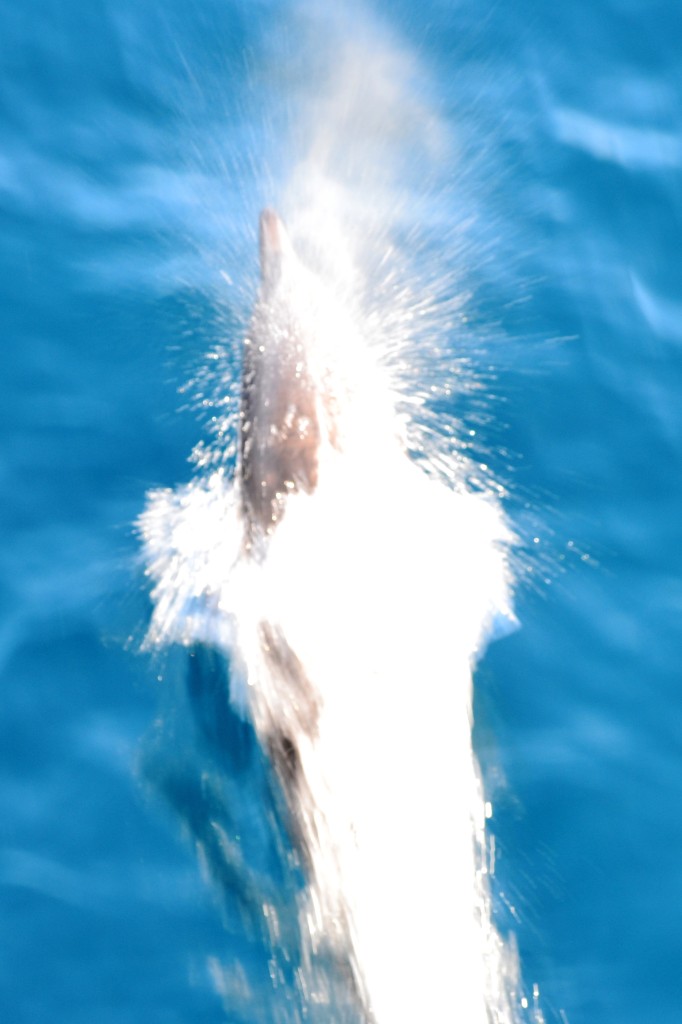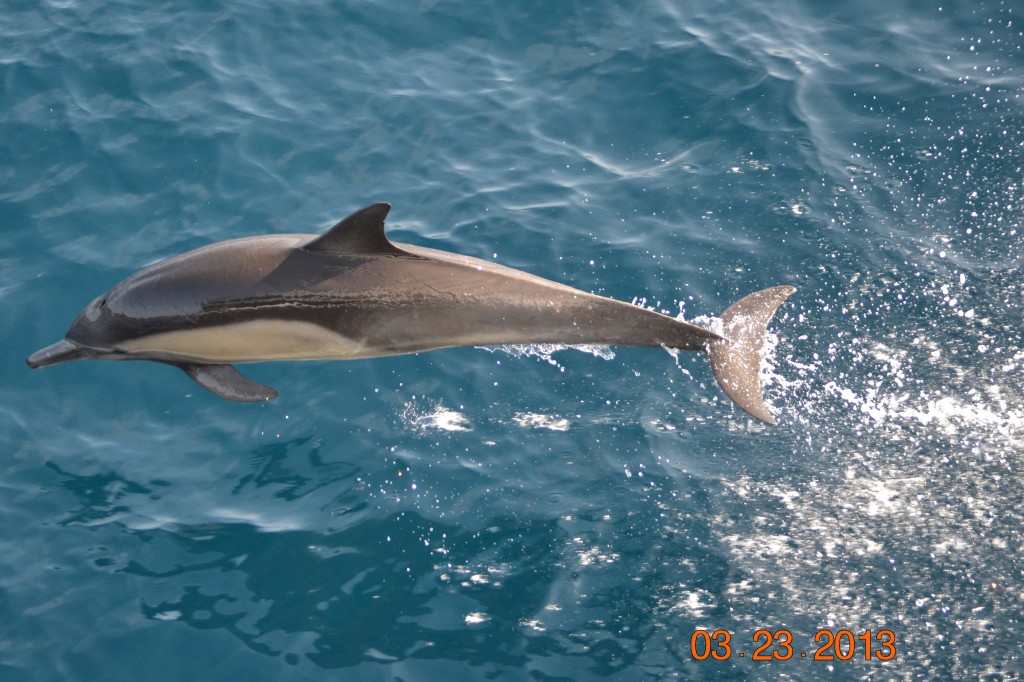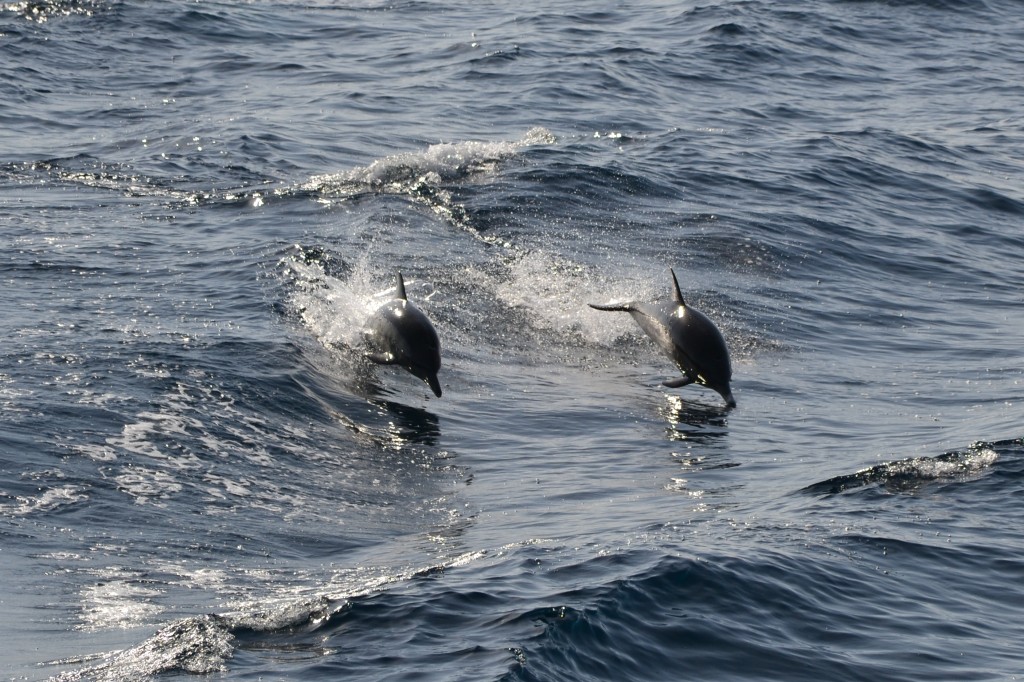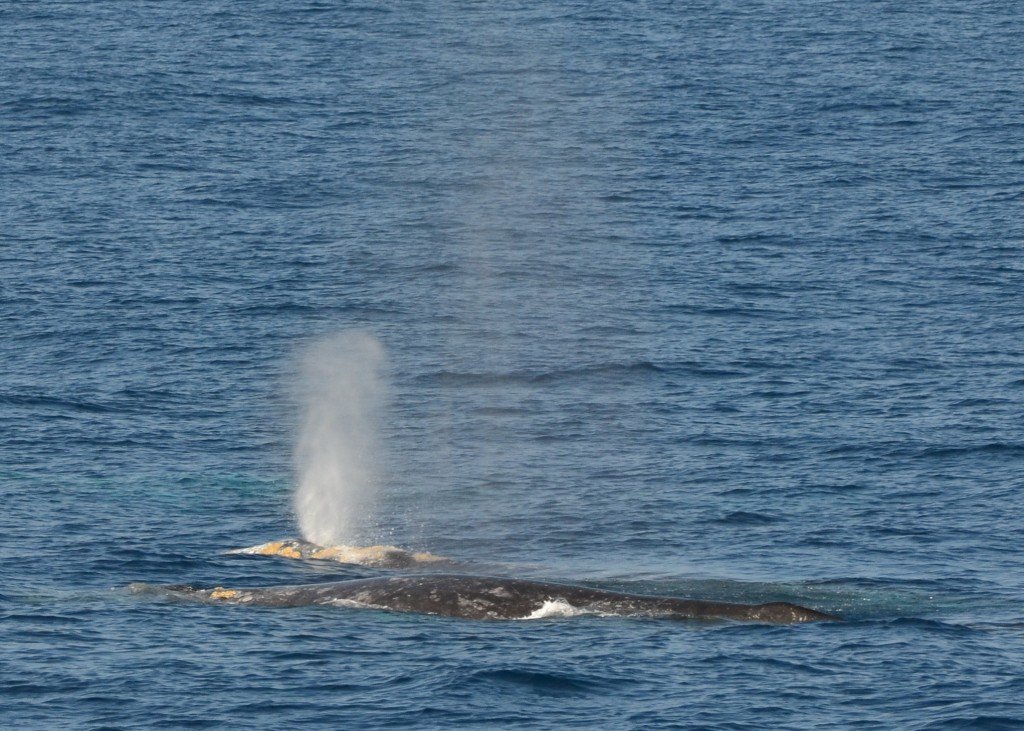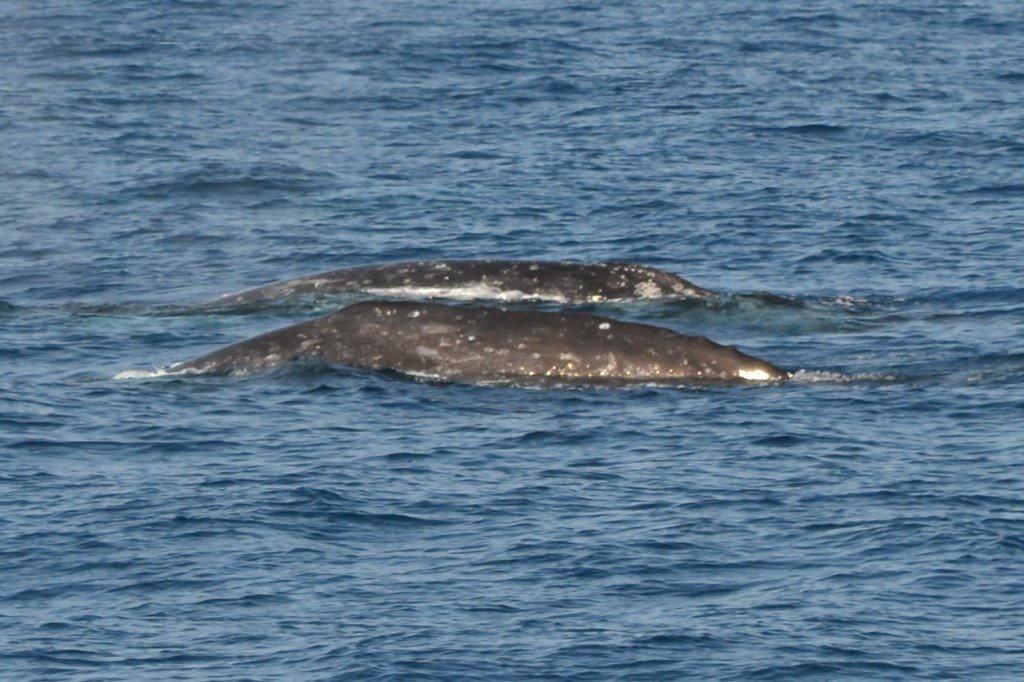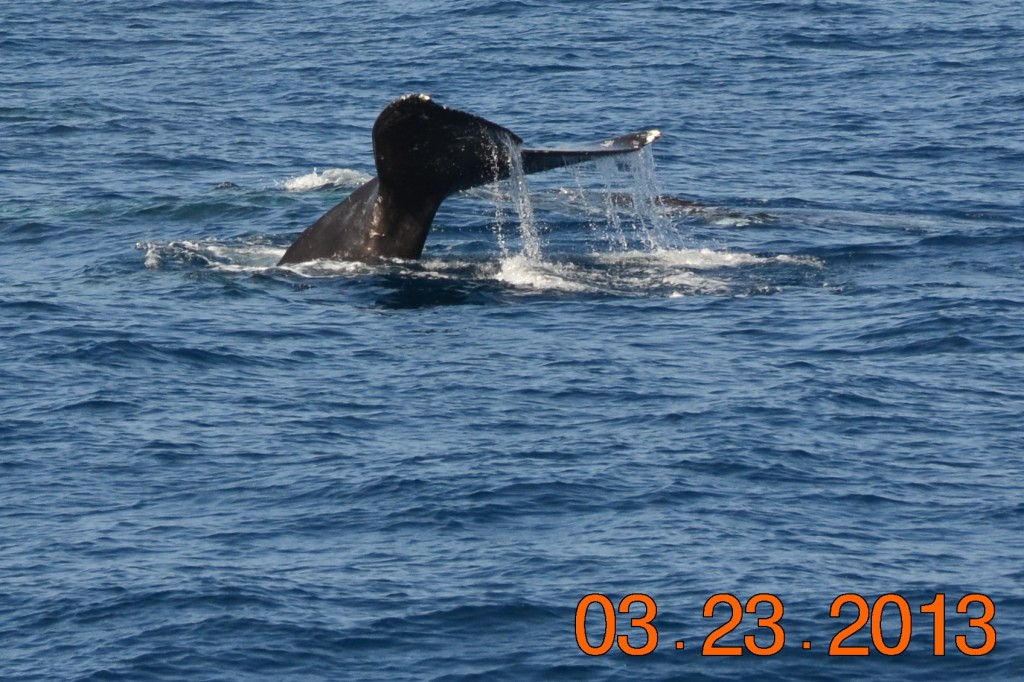So Long, and Thanks for All the Fish
Cya! I’m Outta Here!
From time to time I get asked, “If intelligent alien life forms exist outside this planet, then they should be able to communicate with us either from their own planet or if and when they visit ours.” Well not necessarily, let me explain. Let’s look in our own back yard which covers the majority of our planet. The oceans.
The Long – Beaked Common Dolphin
The Common dolphin or (Delphinus delphis) is identified by the colored hourglass pattern on its side. The hour-glass pattern is light grey or tan or yellow with a dark stripe from the flipper to the lower jaw. The other distinctive feature is the well-defined long black beak. The Long Beaked Common Dolphin lives in warm temperature shallow waters. These pictures of dolphins were seen off the coast of San Diego, California.
The Common Dolphin lives in large groups called pods and are very social. The groups or “pods” can be anywhere from 50 to in-the-thousands. They work together in the pods to catch a vast variety of prey from squid to smaller fish like sardines, anchovies and pilchards. Dolphins in particular are very vocal and produce a range of click and whistles used for both communication and navigation.
Various news agencies reported in February 2013, that proceedings from the Royal Society B stated, “Bottlenose dolphins call out the specific names of loved ones when they become separated.” Other than humans, these dolphins seem to be the only other animals to do this. Using whistles, they give themselves specific names in which they can identify themselves to other dolphins within their pods or other associated pods. This new finding also claims the dolphins can respond to each other by saying the names of other dolphins involved in various situations. This is truly an amazing discovery!
California Gray whales off the coast of San Diego
Every year thousands of Eastern North Pacific Gray whales (Eschrichtius robustus) or what we call the California Grays, (not the alien ones) migrate from feeding grounds in the Arctic to the warm waters of Mexico. This migration takes them 8,500 to 11,000 miles swimming at a pace of about 5 mph. These whales can reach a length of 46 feet and weigh up to 36 tons (72,000 pounds). At birth the calves are about 15 feet long and can weigh close to one ton (2,000 pounds). They generally travel in small pods of about 3 whales, but the pod could have as many as 16.
The Eastern Pacific Gray Whale is the most ancient Baleen whale alive in the world today. Grays feed along the bottom of the seafloor by scooping up large mouthfuls of sediment and strain small invertebrates through their baleen.
The migration starts late December to early January and whales begin to arrive from the Arctic to the lagoons of the Mexican waters. The first to arrive are generally the pregnant mothers who look to the lagoons for protection while birthing. By mid-February and into mid March, the majority of the Gray Whales have reached the waters, including the young ones which were born on the way. Their vacation is short and the first to leave are the newly mated males and females without calves. Pregnant females and nursing mothers with their newborn calves are the last to leave. They leave only when their calves are ready for the long journey back, which usually starts from late March to mid April.
The California Gray Whale’s skin is usually gray with some blotchy white spots including hundreds of pounds of barnacles and whale lice attached to it. There are little or no parasites on its right side because of the way it scrapes along the ocean bottom to feed. They have a layer of blubber up to 10 inches thick and there are hairy bristles (vibrassae) on the Gray Whale’s snout and front of the head. These are used as tactile sensors, like kitty cat whiskers.
The California Gray Whale has two broad flippers, no dorsal fin, and a series of small ridges along its back near the flukes. The ‘Gray’ whales emit grunts, clicks, and whistling sounds which are produced by breaching and are used in communication with other ‘Gray’ whales.
Now that we know a little about dolphins and whales, what have we learned? Well, we learned they can communicate with themselves, but can’t communicate with each other. In other words, they can’t communicate outside their species. Some websites say they can, but they can’t, not directly. They do understand each other’s behavior from time to time, but not each other’s language.
As we learned earlier, the Bottle Nose Dolphins are more advanced than we originally thought, with the ability to assign each other names for identification. Unfortunately they can’t do that with their close neighbors, the whale. And as far as we know, the California Grays language is no where near the dolphin’s where it comes to name recognition. It is unknown at this time if the Common Dolphin has this name recognition ability too!
So how does this relate to alien existence outside our planet and how they might be able to communicate with us? Simple… uh in theory.
We have highly intelligent animals living within our oceans which have the means of communicating with each other but only within their own species. In other words, “They can’t talk to the other guys or Grays!” So if we have species on this planet who have lived together in the same environment, the ocean for 1000’s of years, what makes people think that intelligent life living outside this planet in the oceans of space, could do any better? Well maybe they can’t.
There could be limitations within our speech pattern they can’t replicate, and visa versa. Limitations could also include everything from vocal chord structure, methodologies in communicative perception and body language limitations. So what does this mean? This means a long hard learning curve might need to be considered when trying to communicate between alien and human species. Just because they’re intelligent and we’re intelligent, doesn’t mean we’ll be able to communicate with each other and get it right the first time.
So if we get it right, then we’ll be able to move forward with our new friends, but if we get it wrong and the Bottle Nose dolphins beat us to it, then just like the book, “Hitchhiker’s Guide to the Galaxy”, the Bottle Nose dolphins will say,
“So Long, and Thanks for All the Fish!”
( All pictures taken by me while on a whale watching trip. )
Blog References:
http://www.dolphins-world.com/Common_Dolphin.html
http://www.marineparks.wa.gov.au/fun-facts/57-common-dolphin.html
http://californiagraywhalecoalition.org/
http://www.ocean-institute.org/programs/gray_whale.html
http://www.whale-images.com/info/gray-whale-facts.htm
Hitchhiker’s Guide to the Galaxy, written by Douglas Adams.
Category: Chuck Zukowski, In the News, The Z-Files

